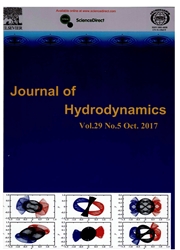

 中文摘要:
中文摘要:
为了研究射流式马铃薯输送泵的性能,该文根据马铃薯输送的特点设计了一台射流式马铃薯输送泵,通过试验的方法对流量比、面积比和输送高度3个因素对输送性能的影响进行了研究,并分析了不同工况对马铃薯损伤的影响。研究结果表明:马铃薯的最高输送能力达1 667.46 kg/h;在相同的输送高度和面积比下,输送能力和泵水功率随着流量比的增加而增加;在相同的被吸流体流量和扬程下,输送能力随着面积比升高而降低;在相同的面积比和工作流体流量下,输送能力随着输送高度的升高而降低,而输送单位质量马铃薯的能耗随之升高;在大部分工况中,马铃薯在输送过程中没有损伤;但是在少数流量比较低的工况中,由于回流的作用,马铃薯可能与喷嘴或者泵内壁面碰撞而导致损伤;综合考虑输送能力和马铃薯损伤,在试验所涉及的工况中,射流式马铃薯输送泵面积比1.75,流量比0.49,输送高度1.40 m为输送马铃薯的最优工况。
 英文摘要:
英文摘要:
Potatoes are the fourth global economic crop following wheat, rice and maize. With the increase of potato production, potato transportation has become an important problem restricting the current potato industry. The traditional method usually uses belt conveyors to transport the potato. However, belt conveyors are not able to convey potatoes vertically and some of potatoes are mechanically damaged during the transportation process, which seriously limits the development of potato transportation. In present paper, annular jet pumps(AJPs) were proposed and used for the transportation of potatoes because of their broad flow passages without any rotating part, which reduced the possibility of potato damage. This jet potato pump(JPP) had high potential for the transportation of potatoes due to its simple structure and lesser tendency towards mechanical damage. Considering the characteristics of the potato transportation, a conical net tube was used to centralize potatoes with extremely low possibility of mechanical damage, and the lift height was used to control the outlet pressure instead of the outlet tube valve, which avoided potential mechanical damage on potatoes. Based on the experimental method, we demonstrated the impacts of flow ratio, area ratio as well as the lift height of JPP on the capacity in potato transportation. Meanwhile, according to potato mass changes after transportation, we also investigated different types of mechanical damage and discussed the corresponding operation conditions. The results showed that the maximum capacity of potato transportation reached 1667.46 kg/h for this JPP in the experiment, and the corresponding hydraulic power and energy consumption per unit mass were 3.93 kW and 2.36 kW ·h/t respectively. The transportation capacity and hydraulic power increased with the increase of flow ratio under the same area ratio and lift height, and the energy consumption per unit mass changed little under small flow ratio but increased sharply under big flow ratio; the transportat
 同期刊论文项目
同期刊论文项目
 同项目期刊论文
同项目期刊论文
 Application of Constant Rate of Velocity or Pressure Change Method to Improve Annular Jet Pump Perfo
Application of Constant Rate of Velocity or Pressure Change Method to Improve Annular Jet Pump Perfo 期刊信息
期刊信息
